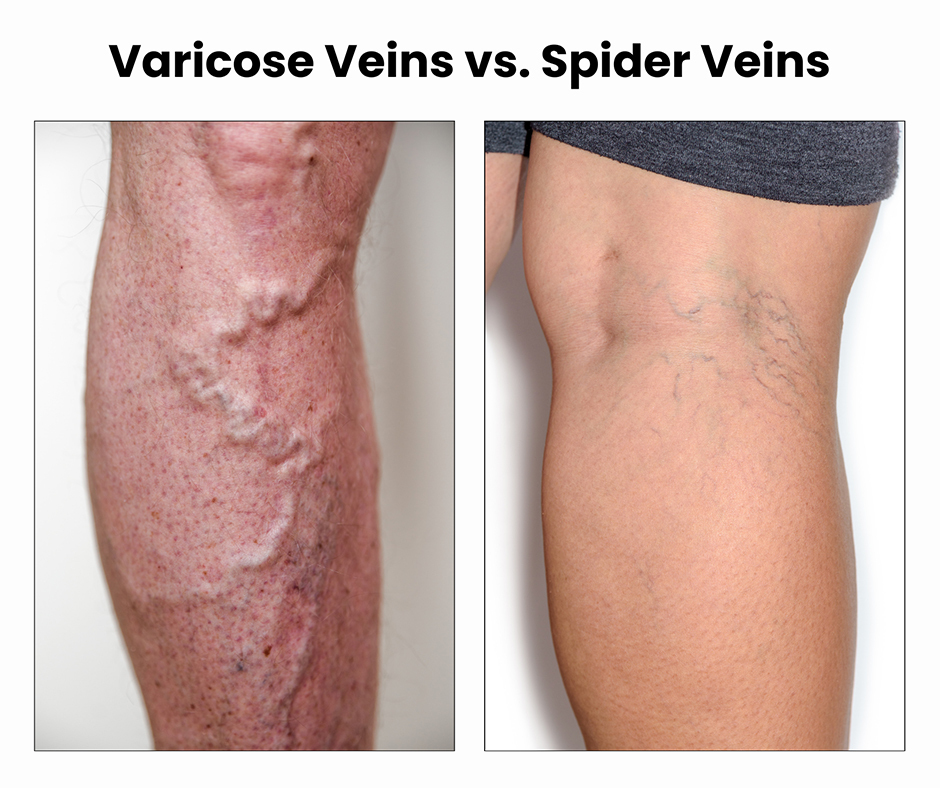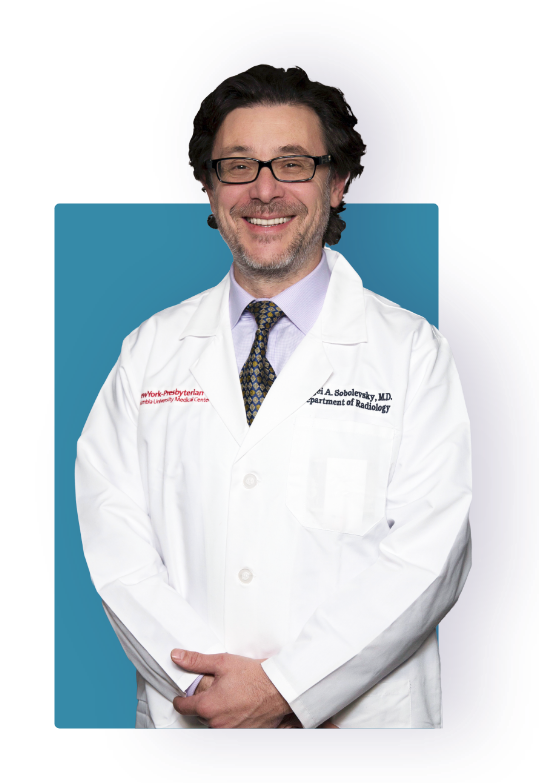Do not ignore a growing network of dark veins on your hands, legs, or feet, as they may be a sign of some underlying medical problem that can turn serious if left untreated. Whether these dark or discolored veins result from chronic venous insufficiency or some cosmetic issue, they can be analyzed and managed positively to avoid further complications. Schedule an appointment with Dr. Sergei Sobolevsky at the Downtown Vein & Vascular Center to have your dark veins thoroughly investigated and know about the best practices regarding prevention and treatment.
Varicose Veins – When They Become a Cause for Concern?
 Are you getting worried about the appearance of dark and bulging veins on your legs, arms, or face that were not there before? Seeing dark blue veins deep under the skin is not abnormal. For some people, this swelling may result from aging or rising blood pressure and is aesthetically unappealing, but it may be a sign of some underlying health condition for others. If your veins continue to change their color and become prominent, accompanied by other symptoms like pain, swelling, and heaviness in the legs or ankles, seek medical help immediately.
Are you getting worried about the appearance of dark and bulging veins on your legs, arms, or face that were not there before? Seeing dark blue veins deep under the skin is not abnormal. For some people, this swelling may result from aging or rising blood pressure and is aesthetically unappealing, but it may be a sign of some underlying health condition for others. If your veins continue to change their color and become prominent, accompanied by other symptoms like pain, swelling, and heaviness in the legs or ankles, seek medical help immediately.
Understanding Varicose Veins and Spider Veins – What Exactly Are They?
Varicose veins and spider veins are common, especially in women. They have often been considered a cosmetic issue, but they could be a sign of venous disease if they persist and become painful.
Varicose veins are recognized by their bluish, purplish, or reddish color and twisted, swollen appearance that becomes painful with time. Spider veins appear as a web of red, blue, or purple veins that spread across the legs and face, closer to the skin surface.
What Does It Mean When Your Veins Are Dark?
There are various reasons behind darkening or discoloring veins. They could result from life changes, benign factors, or some venous disorder that needs clinical attention.
Veins get dilated, stretched, and swollen with blood, makes them even more prominent, and they seem to be bulging out from the surface of the skin. Consult a vein care doctor to have them diagnosed accurately and to rule out the possibility of some critical health issue.
Dark veins symptoms
Symptoms of dark veins can include:
- Twisted, tangled, and gnarled-looking veins
- Ruptured or bleeding veins
- Color changing veins
- Hardened veins
- Pain and heaviness in the legs and ankles
- Burning sensation or itchiness in legs
- Inflammation and swelling in legs around the affected veins
Read more: Ankle Discoloration: A Sign of Vein Disease
Dark Veins – Do They Result from an Underlying Health Problem?
Persistent dark veins accompanied by other painful symptoms may indicate some underlying health problem that needs prompt medical attention. They may be harmful as dark veins indicate poor blood circulation or a higher risk of varicose veins.
Some dangerous underlying conditions associated with dark veins include:
Deep vein thrombosis (DVT)
It is a medical condition in which a blood clot forms in one or more deep veins in the body, mostly the legs. It can cause pain and swell in the legs and ankle. It should be taken seriously as this clot can break loose and travel to the lungs, causing pulmonary embolism.
Pulmonary embolism (PE)
It is a life-threatening condition that occurs when the blood clot gets stuck in blood vessels of the lung, causing swelling and throbbing in the legs, chest pain, and shortness of breath.
Peripheral artery disease (PAD)
PAD is the narrowing of the peripheral arteries that carry blood away from the heart to other parts of the body. Reduced flow of blood results in leg pain when walking, cramping, and weakness in the lower parts of the body.
What Causes Dark Veins in the Legs?
The causes of dark veins depend on the conditions behind them and their symptoms. Knowing more about what is causing these conditions can help you prevent them and seek the best treatment.
If your veins are close to the surface of the skin, they are more prominent. As these veins carry blood to the heart, they are naturally blue or purple. They seem more visible at times due to factors like exercise and high blood pressure, or maybe you did not notice them before.
When blood is full of oxygen, it is red. Once the body parts and organs have used up the oxygen, the blood turns purple or blue. The used-up blood travels from the body parts back to the heart through the veins, and this is why the veins seem darker.
Hormonal imbalance can also lead to dark veins. If you take birth control pills or other medications for managing hormones, you will notice veins that were not there before. Due to hormonal shifts, the blood flow can increase, leading to visible veins.
Pregnancy can make a lot of changes to the body. It increases the blood volume by 20 to 40%, which in turn raises the pressure on the veins, expanding and making them seem dark and swollen.
Veins can turn darker with aging. The skin loses its elasticity and becomes thinner, and as a result, veins become more pronounced. Losing muscles and fats is a part of growing old that makes the veins seem darker.
Other Factors That Cause Dark Veins
Many other factors lead to dark and prominent veins. Understanding which one of these factors is causing your dark veins will help to address them timely. They include:
- Injury – Injury can cause the blood to get backed up in the affected areas, especially the legs.
- Lack of movement – Lack of activity for a longer time decreases blood circulation and leads to patches of dark skin.
- Fair skin – People with fair skin or lighter hair are more likely to have prominent and dark veins.
- Drinking – Alcohol dilates the veins for a short time, making them more obvious. A drinking habit can dilate the veins permanently.
- Smoking – Long-term tobacco use also leads to vein problems. It sends chemicals into the bloodstream that thicken the blood and reduce the oxygen levels. This thickening can cause the blood to pool in the lower extremities, and lack of oxygen will turn the blood blue, resulting in dark veins.
- Heat – Your veins may become more visible and darker during the summer months as heat enlarges veins and makes the vascular system worker harder.
When to Seek Medical Assistance for Dark Veins?
Seeking medical assistance for dark-looking veins is necessary to prevent health-related issues in the long run. Varicose and spider veins are usually harmless but they should be checked by a professional healthcare provider to rule out any possibility of a serious problem.
If you are concerned about persistent dark veins, and gradually increasing painful symptoms, visit a vein specialist to know more about your condition and possible treatment options. Dark or bulging veins can be a sign of vascular disease when accompanied by a sensation of burning, itching, or pain.
Contact an experienced and certified vein expert doctor immediately to avoid the pooling of blood in veins and venous reflux.
What Happens If Dark Veins Are Left Untreated?
Veins are responsible for the normal flow of blood. In the case of venous disease, the blood circulation process is affected. If they are left untreated, dark veins can cause serious complications. They include:
- Ulcers – dark or varicose veins increase the risk of developing venous ulcers.
- Bleeding – dark and swollen veins near the skin surface are very fragile, and if you cut or scratch your leg, they can start bleeding.
- Blood clots – veins close to the skin can develop thrombophlebitis or blood clots and inflammation of the veins.
You must seek immediate medical attention in case your veins start bleeding or your symptoms become too painful.
How to Prevent Dark Veins?
While there is no way to prevent dark veins, you can take measures to stop the condition from worsening and ensure they do not become painful.
You can manage dark veins by:
- Adopting a healthier and active lifestyle
- Keeping your legs elevated
- Wearing compression socks or hose
- Reducing the intake of sodium in your diet
- Increasing potassium in your diet
- Eating more high-fiber fruits and vegetables
- Taking in more flavonoids
- Wearing loose and comfortable clothing
- Massaging the veins gently
How to Get Rid of Dark Veins on Legs
If the dark veins on the leg are becoming a source of embarrassment for you with their unsightly appearance, there are a variety of options to have them removed. Whether these veins are a cosmetic outcome or a result of venous disease, there are plenty of treatment methods to get rid of them.
Treatment Options for Dark Veins
Modern technology has made vein treatment effective and simple, which provides relief from all types of venous diseases without going through painful procedures.
Treatment options for removing dark veins include:
- ELAS or endovenous laser therapy – It is a minimally invasive procedure in which a thin laser filament is injected into the vein through a needle in the lower leg. Laser energy is used to heat the vein inside, causing it to close down.
- Radiofrequency Ablation – This procedure uses radiofrequency energy to heat the affected vein and damage its wall to shrink or close it.
- Ambulatory Phlebectomy – This procedure removes superficial veins through small, slit-like incisions in the skin.
- Sclerotherapy – During this procedure a medically approved chemical solution is injected into the vein through a microneedle to induce an inflammatory reaction, which causes the vein to seal shut and disappear.
Your doctor may combine more than one procedure to achieve the desired results and come up with a customized treatment plan to relieve your dark veins and painful symptoms.
Downtown Vein & Vascular Center specializes in the diagnosis and treatment of varicose and spider veins using the most advanced diagnostic equipment and vein screening methods. With the help of minimally invasive techniques, Dr. Sergei Sobolevsky provides effective vein treatment and helps you get back to your normal routine in a very short time.

Sergei Sobolevsky, MD, is a leading specialist in endovascular medicine with experience in vascular and interventional radiology. Dr. Sobolevsky has decades of experience in the field, with over 25,000 procedures performed, accumulating extensive experience in image-guided minimally invasive medicine, diagnosing and treating a range of conditions.
Dr. Sobolevsky earned his Doctor of Medicine (MD) degree in 1997 from the University of Colorado School of Medicine. He received his specialty clinical training in vascular and interventional radiology at Harvard University. Later, he earned his MBA from the MIT Sloan School of Management. Recognized as a Castle Connolly Top Doctor and named to the Top Doctors New York Metro Area in 2020, 2021, and 2022, Dr. Sobolevsky is licensed in multiple states, has delivered presentations at numerous institutions in the US and abroad, and now acts as a clinical advisor for the biomedical industry. He also held multiple positions in the field during his career, including Chief of Vascular and Interventional Radiology at the Columbia University Medical Center in New York, NY, Senior Vice President in Clinical and Regulatory Affairs at Artann Laboratories in North Brunswick, NJ, and Medical Director at the American Endovascular and Amputation Prevention Center in Brooklyn.
More About Dr. Sobolevsky

